Macro Calculator
This free, easy-to-use macro calculator gives you your optimal macronutrients and calories. It’s a weight loss or muscle gain calculator for both women and men.
Combine with macro counting or flexible dieting to reach your goals faster.
How to get leaner and stronger?
Our comprehensive macro-based fat loss program shows you how. Learn more
How do macros work?
The foods we eat are made up of three macros (macronutrients). These are carbohydrates (carbs), protein, and fat.
Chicken is high in protein but has no carbs; rice is high in carbs but has very little fat or protein. The three macronutrients provide the body with energy and raw materials for growth and repair.
By calculating the appropriate daily calorie amount for you, we can then break this down into the best macronutrient ratios to achieve weight loss.
Basic steps for macro counting
- Enter details into the calculator
Make sure to choose the correct goal. - Take note of your calories and macros
These will be the targets you are aiming for each day. - Track your macros
Use an app or pre-plan your meals. - Measure results
Don’t use basic weight scales.
Use proper body composition scales (we recommend Renpho) to measure fat and muscle mass changes.
What is a good macro ratio for fat loss or muscle gain?
Your macros should be based on your Total Daily Energy Expenditure (TDEE) and goals.
The calculator defaults to the best macro ratio proven to work for most people.
This ratio is:
- 30% fat
- Protein is 0.65 grams per pound of body weight,
- The remainder is carbs.
Depending on your goal, this will be either a calorie deficit or a surplus.
You can go further and make more adjustments: Perhaps you’re an extreme endomorph and do better with fewer carbs. Or perhaps you have one kidney and need to eat less protein.
You can fine-tune your results with a bit of math. See how to change your macros here.
What is a good protein ratio?
Rather than a percentage, proteins are based on your body weight. Our calculator has three settings:
- Moderate adjusts the ratio to 0.65 grams per pound of body weight.
This is appropriate for sedentary individuals or people with higher body fat percentages. - High is for active people with moderate strength training and an average body fat percentage.
- Maximum will set the ratio to 1 gram per pound.
This amount is good for bodybuilding and gaining muscle mass. You must be doing intense training.
Find out how to fine-tune your protein ratios when counting macros
Fat macro ratio
Set fat at 30% of daily energy expenditure.
Most people do very well with this amount of fat. See more about choosing the best macro fats. Because of high-fat diets like keto, many people are now eating more fat than they need to.
Carbohydrate macro ratio
Once you’ve calculated protein and fat, the remainder of your daily calories should be from carbohydrates.
Carbs fuel your body and workouts – and are the body’s preferred energy source.
If you are coming from a low-carb background, this may seem high. However, according to respected nutritional research, this is a moderate amount of carbs.
If you are eating according to your TDEE, the notion that carbs cause weight gain or stop fat loss is incorrect.
Using as a Calorie Deficit Calculator
As a weight loss calculator, this tool establishes a safe calorie deficit only.
The Lose option puts you in a 20% calorie deficit, promoting safe, steady weight loss.
The best macro ratio for body recomposition
If you want to recompose your body (lose fat and gain muscle simultaneously), then use the body recomposition calculator.
Macro ratio for maintenance
The Maintain button shows you the macro levels to maintain your current weight.
This is great if you have lost weight and don’t want to gain it back.
Macro ratio for muscle gain
The Gain button puts you in a 20% calorie surplus.
The macro breakdown is designed to build muscle fast in conjunction and must be combined with a comprehensive weight training program.
Underweight people can also use it.
TIP: Try starting with the maintenance goal and gradually increasing calories if you want lean muscle gains.
Calculating macros using your body fat percentage
The calculator uses your body weight to determine calories and macros.
However, you can obtain superior results by using your body fat percentage. The calculator allows you to choose which method: Normal for body weight, Lean Mass for fat percentage.
When to choose the Lean Mass Formula
If you are lean (have a low body fat percentage), choose the Lean Mass formula and enter your body fat %.
If you are classified as obese and have a lot of weight to lose, the lean mass formula is superior. You can read more about macro counting and obesity.
Help? Calculate your ideal body weight or get an assessment of your body fat percentage.
Why the difference? Muscle cells burn more calories than fat cells, so the more accurately we measure this, the better your results will be.
How to calculate macros per meal
You can break this down into meals once you’ve calculated your daily macros in the calculator.
Choose from 2 to 6 meals daily to see the macro ratio you can track for each meal. For some people, this is easier, but for others, this is too much detail.
Do what works for you.
Meal Plans
See a 5-day macro-based meal plan. It includes three meals and two snacks per day.
Macro calculator activity level settings
A higher activity level means a higher daily calorie goal.
For example – if you maintain your weight at 2,000 calories per day, adding vigorous daily exercise means you need more calories to maintain your weight.
If you are sedentary and trying to lose weight, adding exercise will increase your daily calorie goal.
The idea seems counter-intuitive, but more energy is required to fuel your workouts. More workouts lead to increasing metabolism; therefore, more fat is burned!
Undereating is one of the leading causes of the weight loss plateau.
So many of our clients previously “hit the wall” with dieting. They would continually reduce calories, stop losing fat, and gain weight when they eat a little more.
Macro counting defeats this by prescribing the right food and calorie levels.
Which activity level do I choose?
- Sedentary: Just regular everyday activity like a bit of walking, a couple of flights of stairs, eating, etc.
- Light: Any activity that burns 200-400 calories (females) or 250-500 calories (males) over your sedentary amount.
- Moderate: Any activity that burns 400-650 calories (females) or 500-800 calories (males) more than your sedentary amount.
- Extreme: Any activity that burns more than 650 calories (females) or more than 800 calories (males) in addition to your sedentary amount.
Other options for determining your calorie burn
- Use our calories burned calculator – it accurately assesses over 380 activities.
- Use a fitness tracker – like a Fitbit or Apple Watch (note that they can overestimate calorie burn).
- Use a suitable app – like MapMyFitness
Why should I eat more when I exercise more?
High physical activity not fueled with enough calories will lead to muscle catabolism (breakdown of muscle fiber).
This lack of nutrition could stall your weight loss, so eat up if you love to exercise!
I’ve got my macros – now what?
Once you’ve identified your target daily macros, you must determine the macros in all your foods.
By tracking them daily, you can reach your recommended macro targets that encourage fat loss, muscle gain, or whatever your goal may be.
You can learn more about the macro counting system and the flexible dieting philosophy. Many people use an app like Myfitnesspal to track macros.
For more specifics on what to eat – see a sample macro meal plan or a list of macros for familiar foods.
View article sourcesSources
- Mifflin, M. D., St Jeor, S. T., Hill, L. A., Scott, B. J., Daugherty, S. A., & Koh, Y. O. (1990). A new predictive equation for resting energy expenditure in healthy individuals. The American Journal of Clinical Nutrition, 51 (2), 241-247. Link
- McArdle, W. D., Katch, F. I., & Katch, V. L. (2010). Exercise physiology: nutrition, energy, and human performance. Lippincott Williams & Wilkins. Link
- Jequier, E. (1994). Carbohydrates as a source of energy. The American journal of clinical nutrition, 59(3), 682S-685S.
- Lemon, P. W., Tarnopolsky, M. A., MacDougall, J. D., & Atkinson, S. A. (1992). Protein requirements and muscle mass/strength changes during intensive training in novice bodybuilders. Journal of Applied Physiology, 73(2), 767-775. study abstract link
- Grundy, S. M. (1999). The optimal ratio of fat-to-carbohydrate in the diet. Annual review of nutrition, 19(1), 325-341. abstract
- Conlin, L.A., Aguilar, D.T., Rogers, G.E. et al. Flexible vs. rigid dieting in resistance-trained individuals seeking to optimize their physiques: A randomized controlled trial. J Int Soc Sports Nutr 18, 52 (2021). https://doi.org/10.1186/s12970-021-00452-2
2,104 Comments


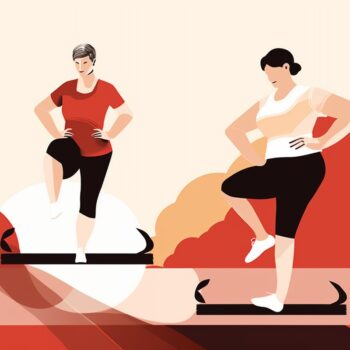 Menopause Macro Calculator
Menopause Macro Calculator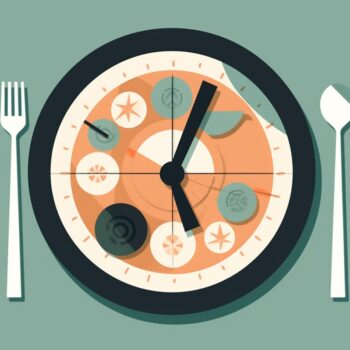 Intermittent Fasting Calculator
Intermittent Fasting Calculator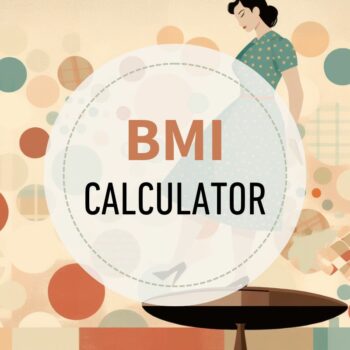 BMI Calculator
BMI Calculator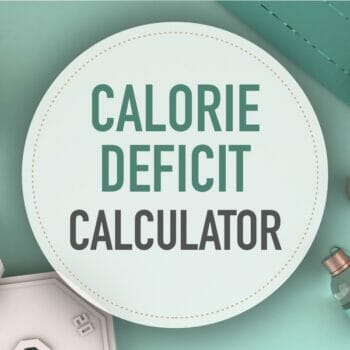 Calorie Deficit Calculator
Calorie Deficit Calculator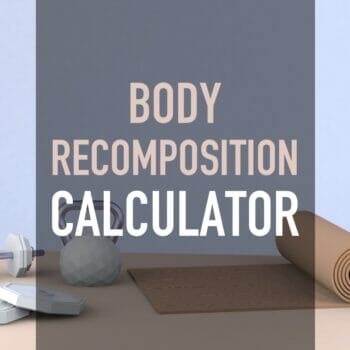 Body Recomposition Calculator
Body Recomposition Calculator
Hello,
I’m a male and currently 17 years old and I’m about 5’7 give or take and I weigh in about 145-148. I have about 15-17% BF. I want to be able to lose my belly fat and also gain muscle mass. What do you recommend? Should I cut my fat away first and then bulk? Or vice versa. Thank you.
Hi Dylan, You should strive for lean muscle gains since you have less than 10 pounds to lose. Start with the “lose 10” setting. Also, consider the Lean Muscle Edition of my book for further help.
Whoa, so low fat? So high carbs? I used to sell Biggly software, which did a great job of tracking macros and invariably people did better by reducing carbs, not fat.
25% fat isn’t considered low but moderate. Also, the carbs are also moderate. But, for someone stuck in a “low carb diet” mentality I guess moderate would seem high or low. This is exactly what flexible dieting is setting people free from and still allowing them to reach their goals.
I consider it more of a lifestyle than a diet, but yeah, high carbs leads to weight gain unless you’re super active and burning them off via exercise or hormones
Hi Alan, eating carbs only leads to what gain if you are eating more than your TDEE allows. The same is true with fat and protein. All three macros have to be eaten in relation to your Total Daily Energy Expenditure.
And how does one, do you, define this “TDEE”?
Hi Alan, The calculator does this for you, but this page offers an explanation: https://healthyeater.com/how-to-calculate-your-macros
OK, thanks but that basically says after a bit of research you decided on 25%. Somewhat arbitrary and still no real explanation. Why not 24%? Why not 35%? If it’s all about macros then you really need to do a better job of explaining WHY those specific macros.
Hi Ted! I’m curious as to whether I should
Chose the lose 10% or gain muscle option. I’m 26, 5’3″ and about 120 pounds. I have about 18% body fat and am looking to become stronger but stay leaner. I’d still like to lose 2 pounds of body fat. I do crossfit 5x a week with about 30 minutes extra weight training 4 days a week. If I chose the gain muscle option, will I be putting on body fat?
Hi Sarah, If you are wanting to lose any fat at all, you’ll have to be in a calorie deficit to do so. I think lose 10 would be a good place to start.
Hi! I’ve recently been trying to build muscle and want to start tracking macros to help me meet my goals (and to make sure I am eating enough of what I need). I am 5’3 and 115 lbs and my body fat % is about 20%. I usually work out about 1 hr a day with a combination of 30 min cardio and 30 min or so of some kind of strength training (can be an hour of strength if I feel motivated). I figure I should alter between the activity levels depending on the day, but I am not sure if I should be setting my goals to lose 10% or gain. Any advise?
Thanks!
Hi Em, Thanks for stopping by. If you’re trying to gain muscle but not lose fat than you’ll need to be in a calorie surplus, but based on your activity the gain setting will probably be a bit much. If you’re trying to also lose a little fat then the 10% may be a good place to start, but based on your stats you may need less of a deficit. I suggest that you consider the gain lean muscle edition of our Flexible Dieting Solution. It’ll give you guidelines for tuning in your macros for building muscle. https://healthyeater.com/macro-solution
I should add that I am trying to tone up/lose weight around my stomach so I don’t want to gain weight
Hey Ted,
Great amount of info! I know you get it a lot but I would love some assistance. I’m 24, 6ft and around 210-215 lbs around a 25% bf rate. Now, I don’t mind being a bigger guy. In fact, i’m currently working on bulking up my upper body a touch. I’m just looking to trim a little jiggle from the general belly area. I work a pretty sedentary job 12-14 hours a day, but I workout 3 times a week using bodyweight for resistance (with a focus on upper body). I was running macros for bulking, but now I’m planning on going on vacation in just over a month, so I’m going to concentrate on trimming a little first.
Any advice? I generally try to stick to a high protein – low carb – good fats diet, it’s everything else I can’t get my head around.
Thanks!
Hi Tom, You’ll need to be in a calorie deficit to lose the fat so you could start with the lose 10 setting and see if that is enough while still allowing for muscle gain/ maintenance. Also, I would encourage you to check out the gain lean muscle edition of my book since it goes into a lot more detail on the subject. All the best! https://healthyeater.com/macro-solution
Hi! Your site and plan is so informational – loving it! I have a question about activity level selection. I work a sedentary desk job, but am active 30+ mins per day. I run half marathons and have a couple 30-45 min runs weekly, plus one long run 2+ hours. I also road cycle for about an hour twice per week. Additionally, I do circuit/weight training 3ish times per week. Since my workouts range widely, is it better to put myself down as “sedentary” and add calories burned back into my daily count? Or would I fall into the “moderately active” category regularly? I track with garmin and MFP (I tried setting the negative calorie adjustment on MFP but it gave me wacky calculations).
Hi Lorisa, Thanks for stopping by and I’m glad you’ve found our site useful. You should do a fluid approach since your exercise is all over the place. Set sedentary and then add exercise calories back in. Just be mindful of your tracker as they tend to overestimate. It would be could to compare its results with established exercise databases to make sure your garmin is in the ballpark.
Hey Ted, i need some help. Im only 16 but i know a lot about exercise and which machines are more useful than other but my only problem is my macros. im 5’10” and i weigh 155 pounds. Now im going for a steady fat loss (1 pound per week) and i want to plan out my different carb days to
M:Low T:Moderate W:High Thursday:Low F:Low S:Moderate Sunday: High
Can you help me with the amount of carbs/protein/and fat for my low days,moderate, and high?
And i workout 5 times a week forgot to mention that
Hi Aaron, if you’re 5′ 10″ and weigh 155, why are you trying to lose weight? You are already about 10 pounds underweight for your height. You should be working on adding muscle mass.
The part that I’m not getting is “time frame.” Based on the calculations given by this program, how long does it take to reach your goals.
Hi Jessie, It can be different depending on your exact goal and other factors but for weight loss, at a 20% deficit, you can expect for 1-2 pounds per week.
Hello! I am 20 years old female trying to lose weight but also gain muscle. Currently 179 trying to drop down 160-155. The whole macros thing has me very confused. I use MFP but do also track my fit by exercise with the app. I never usually eat back all the calories though. They set macros for me but I’m not sure they are correct?? I workout everyday, cardio for 40-45 mins.. running/ walking on treadmill or stair master/ elliptical. I do lift switching between arm days and leg days. I also kick box about 3x a week. I eat healthy but I think I am not eating enough? I read online a lot I have to eat more? Help me out I’m very lost!!!
Hi Caroline, With the goal you mentioned of losing 20-25 pounds, you really want to start by focusing on fat loss. This would involve a 20% calorie deficit. Once you get within less than 10 pounds of your fat loss goal, you can adjust your macros to focus more on muscle building. Otherwise, you won’t lose fat or the loss rate will be painfully slow.
hi..i m around 72 kg..and 1.67..i do some exercises maybe 2-3 times per week and trying to take care of the food..in my macros says..i should be eating around 135 grams carbs..is this cooked or uncooked coz i feel like is so much for me and i know for myself eating too much carbs makes me increase my weight..
Hi Clara, it’s 135 g of carbs in the foods you eat, cooked or uncooked. 135 g isn’t very much at all. Carbs don’t make you gain weight when eaten in relation to your goal TDEE. It would be helpful for you to read about the basics of flexible dieting https://healthyeater.com/flexible-dieting
Hi! I’m a 41 year old female dealing with medically induced menopause. I lost 30 pounds from January 2 of this year until April using weight watchers and I also trained for and ran my 14th marathon. I’m currently on week 4 of a 90 day bikini challenge that involves carb cycling and weight training. I have been on point with the diet and heavy lift 5-6 days a week 1.5-2 hours each time. I feel stronger already but have lost not.one.pound or inches and it’s super frustrating and baffling.
My eating according to the plan is:
Mon-wed high Carb calories 1540 carb 192, p 135, f 26
Thursday low carb. Calories 1260 Carb 50, p 126, f 52
Fri-Sunday moderate carb calories 1540 carb 115, protein 135, f 60
Something isn’t working…a week ago we upped my numbers by 10% to see if that helped but still nothing.
I am 140 pounds 5’6″ and would like to lose fat and pounds but biggest goal is to get jacked (not toned). I keep hearing “protein is king” when body building is this accurate?
Not sure if I should abandon the challenge and go with your numbers? It’s so frustrating. Thanks for your help.
If I’m want to lose 10-20 pounds but also build loads of muscle at the same time would I enter 10% or lose?
You would probably want to start with lose 10%.
Thank you SO much! I’m definitely revamping…. since my goal is to be jacked and while I have a terrible relationship with the scale (more like the number I see on it) I am willing for it not to move down or even gain IF -and only if- I lose the fat and only gain muscle. I keep trying to figure out would it just be best on the days I workout to do the gain macro count or do you think the 10% would be sufficient? I truly do care more about the muscle then the number but also don’t want to just gain fat. I do know that I need to eat clean (which I have been). I am SO appreciative of this guidance!!!
Also, do you feel 140 grams of protein is sufficient for the large amount of lifting I do? Should I get more?
I would start with the 10% and then evaluate after a couple of weeks. If you use the gain setting, even just on days you workout, I don’t think you’ll lose any fat. Heavy lifters can do more protein than 1 gram per pound of body weight. Depending on what your workout TDEE is, you could do 30-35% protein. This will give you about 160-170 g per day which probably a good upper limit. Glad I could help and please check out the resources we offer. https://healthyeater.com/macro-solution
Hi Rebecca, It looks like you aren’t eating near enough given your height and the amount of exercise you are doing. And if you are training that intensely, you should be eating more protein than what you are. Since you are body building, you also should be tracking body fat percentage, but I doubt you’re adding much muscle because you aren’t eating enough. I think a revamp of your nutrition is in order, for sure.
Hi, I am such a newbie when it comes to macros, working out etc. I’ve been thin my whole life and I got to the point that I didn’t like how I look; so I decided to make a change in my lifestyle. 4 months I started eating healthy (doesn’t mean I know my macros etc) I started lifting weights 5x a week, btw I’m always walking around in my job . I am 5’2 and weighted 126 with 38.7% body fat . 4 months in and i lost 10 pounds. I’m on 116 right now with 32.4%. And it’s becoming frustrating for me not seeing so much results if I’ve been eating healthy . This calculator is giving me 84g of carbs, 24g protein and 16 of fat for 4 meals … I need help.
Hi Karen, Great job so far! First, that would be your macros per meal, just to clarify. Second, you should use the high protein setting since you are weight training. Third, you need to accurately measure your body fat using calipers. There is now way that you are 32% body fat at 116 pounds. This would mean that you have almost 40 pounds of fat and only 74 pounds of bone, nerves, and muscle. This isn’t the case for a woman of your height. Do you have an idea of how many calories you were eating before?
Every time I train I get hungry every 2/3 hours, I don’t want to depend on protein shakes if is not right after weight lifting. I’ve been measuring my body fat with this “scale” but I will buy the calipers today to give you a more accurate percentage. I don’t track my calories until this last week. I’m eating about 1,700 calories.
I also would like a recommendation for protein. I’m currently consuming Herbalife but I stop believing in what they tell me about pills, meal replacement shake etc because I feel like they only want to sell me the product. What’s your though about this? Also the person that was helping me in herbal life gave me this diet which I think is not enough fuel for my body he also made me believe to have a low-carb diet
So I can lower my body fat. His isntructions were:
Protein: chicken, tuna, salmon
Healthy fat: avocado
Carbs: avocado, whole wheat bread
Veggies : green beans, brocolli amd asparagus.
He said it didn’t matter how many meals a day I had
As long as I ate that. I always though carbs would also go to your muscle
Hi Karen, Herbalife is overpriced and over-hyped. Save your money. Understanding your TDEE and eating within those parameters is more important than adhering to a strict set of foods.
Here are some great protein supplements to consider: https://healthyeater.com/protein-supplements-flexible-dieting-iifym
Here is a nice list of Protein, carb and fat rich foods: https://healthyeater.com/carb-protein-fat-rich-foods
Carbs are converted to glycogen which is stored in your muscles and used during exercise for fuel.